541 low relevance results shown for 'Red'. |1|2|3|4|5|6|7|8|9|10|11|12|13|14|15|16|17|18|19|20|21|22 | Next | View 100 per page
Showing low relevance matches only. Return to normal search results
DNA - The transmission of heritable characteristics from one generation to the next involves DNA and genes ACSSU097 Year 6 Physical Sciences
Electrical Circuits - Electrical energy can be transferred and transformed in electrical circuits and can be generated from a range of sources ACSSU115 Year 7 Earth and Space Sciences
Earth Moon Sun - Predictable phenomena on Earth, including seasons and eclipses, are caused by the relative positions of the sun, Earth and the moon ACSSU229 Year 10 Physical Sciences
Forces and Motion - The motion of objects can be described and predicted using the laws of physics ACSBL029 Year 11 Biodiversity and the interconnectedness of life
Ecosystem dynamics - Models of ecosystem interactions (for example, food webs, successional models) can be used to predict the impact of change and are based on interpretation of and extrapolation from sample data (for example, data derived from ecosystem surveying techniques ACSBL085 Year 12 Heredity and continuity of life
DNA genes and the continuity of life - Frequencies of genotypes and phenotypes of offspring can be predicted using probability models, including Punnett squares, and by taking into consideration patterns of inheritance, including the effects of dominant, autosomal and sex-linked alleles and mu ACSBL090 Year 12 Heredity and continuity of life
Continuity of life on Earth - Natural selection occurs when selection pressures in the environment confer a selective advantage on a specific phenotype to enhance its survival and reproduction; this results in changes in allele frequency in the gene pool of a population ACSBL091 Year 12 Heredity and continuity of life
Continuity of life on Earth - In additional to environmental selection pressures, mutation, gene flow and genetic drift can contribute to changes in allele frequency in a population gene pool and results in microevolutionary change ACSCH056 Year 11 Molecular interactions and reactions
Intermolecular forces and gases - The shapes of molecules can be explained and predicted using three dimensional representations of electrons as charge clouds and using valence shell electron pair repulsion (VSEPR) theory ACSCH073 Year 11 Molecular interactions and reactions
Rates of chemical reactions - Catalysts, including enzymes and metal nanoparticles, affect the rate of certain reactions by providing an alternative reaction pathway with a reduced activation energy, hence increasing the proportion of collisions that lead to a chemical change ACSCH091 Year 12 Equilibrium acids and redox reactions
Chemical equilibrium systems - Over time, physical changes and reversible chemical reactions reach a state of dynamic equilibrium in a closed system, with the relative concentrations of products and reactants defining the position of equilibrium ACSCH096 Year 12 Equilibrium acids and redox reactions
Chemical equilibrium systems - Equilibrium position can be predicted qualitatively using equilibrium constants ACSCH097 Year 12 Equilibrium acids and redox reactions
Chemical equilibrium systems - Acids are substances that can act as proton (hydrogen ion) donors and can be classified as monoprotic or polyprotic depending on the number of protons donated by each molecule of the acid ACSCH098 Year 12 Equilibrium acids and redox reactions
Chemical equilibrium systems - The strength of acids is explained by the degree of ionisation at equilibrium in aqueous solution, which can be represented with chemical equations and equilibrium constants (Ka) ACSCH099 Year 12 Equilibrium acids and redox reactions
Chemical equilibrium systems - The relationship between acids and bases in equilibrium systems can be explained using the Brønsted Lowry model and represented using chemical equations that illustrate the transfer of hydrogen ions ACSCH100 Year 12 Equilibrium acids and redox reactions
Chemical equilibrium systems - The pH scale is a logarithmic scale and the pH of a solution can be calculated from the concentration of hydrogen ions; Kw can be used to calculate the concentration of hydrogen ions from the concentration of hydroxide ions in a solution ACSCH101 Year 12 Equilibrium acids and redox reactions
Chemical equilibrium systems - Acidbase indicators are weak acids or bases where the acidic form is of a different colour to the basic form ACSCH102 Year 12 Equilibrium acids and redox reactions
Chemical equilibrium systems - Volumetric analysis methods involving acidbase reactions rely on the identification of an equivalence point by measuring the associated change in pH, using chemical indicators or pH meters, to reveal an observable end point ACSCH103 Year 12 Equilibrium acids and redox reactions
Oxidation and reduction - A range of reactions, including displacement reactions of metals, combustion, corrosion, and electrochemical processes, can be modelled as redox reactions involving oxidation of one substance and reduction of another substance ACSCH104 Year 12 Equilibrium acids and redox reactions
Oxidation and reduction - Oxidation can be modelled as the loss of electrons from a chemical species, and reduction can be modelled as the gain of electrons by a chemical species; these processes can be represented using half equations ACSCH106 Year 12 Equilibrium acids and redox reactions
Oxidation and reduction - The relative strength of oxidising and reducing agents can be determined by comparing standard electrode potentials ACSCH107 Year 12 Equilibrium acids and redox reactions
Oxidation and reduction - Electrochemical cells, including galvanic and electrolytic cells, consist of oxidation and reduction half reactions connected via an external circuit that allows electrons to move from the anode (oxidation reaction) to the cathode (reduction reaction) ACSCH108 Year 12 Equilibrium acids and redox reactions
Oxidation and reduction - Galvanic cells, including fuel cells, generate an electrical potential difference from a spontaneous redox reaction; they can be represented as cell diagrams including anode and cathode halfequations ACSCH110 Year 12 Equilibrium acids and redox reactions
Oxidation and reduction - Cell potentials at standard conditions can be calculated from standard electrode potentials; these values can be used to compare cells constructed from different materials ACSCH130 Year 12 Structure synthesis and design
Properties and structure of organic materials - Data from analytical techniques, including mass spectrometry, xray crystallography and infrared spectroscopy, can be used to determine the structure of organic molecules, often using evidence from more than one technique ACSPH040 Year 11 Thermal nuclear and electrical physics
Electrical circuits - The energy available to charges moving in an electrical circuit is measured using electric potential difference, which is defined as the change in potential energy per unit charge between two defined points in the circuit ACSPH041 Year 11 Thermal nuclear and electrical physics
Electrical circuits - Energy is required to separate positive and negative charge carriers; charge separation produces an electrical potential difference that can be used to drive current in circuits ACSPH061 Year 11 Linear Motion and Waves
Linear motion and force - Representations, including graphs and vectors, and/or equations of motion, can be used qualitatively and quantitatively to describe and predict linear motion ACSPH064 Year 11 Linear Motion and Waves
Linear motion and force - Momentum is a property of moving objects; it is conserved in a closed system and may be transferred from one object to another when a force acts over a time interval ACSPH065 Year 11 Linear Motion and Waves
Linear motion and force - Energy is conserved in isolated systems and is transferred from one object to another when a force is applied over a distance; this causes work to be done and changes to kinetic and/or potential energy of objects ACSPH073 Year 11 Linear Motion and Waves
Waves - A mechanical system resonates when it is driven at one of its natural frequencies of oscillation; energy is transferred efficiently into systems under these conditions ACSPH076 Year 11 Linear Motion and Waves
Waves - A wave model explains a wide range of lightrelated phenomena including reflection, refraction, total internal reflection, dispersion, diffraction and interference; a transverse wave model is required to explain polarisation ACSPH021 Year 11 Thermal nuclear and electrical physics
Heating processes - Change of state involves internal energy changes to form or break bonds between atoms or molecules; latent heat is the energy required to be added to or removed from a system to change the state of the system
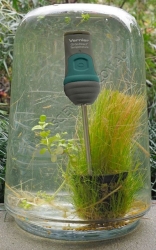
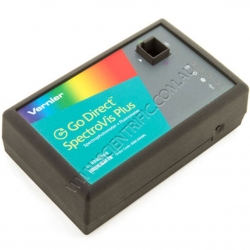
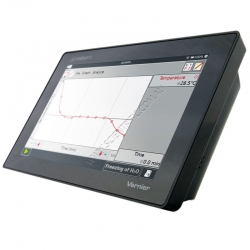
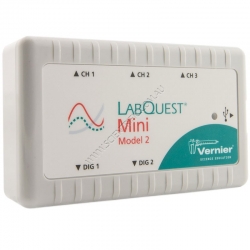
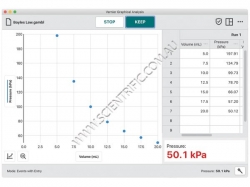
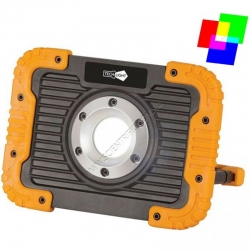
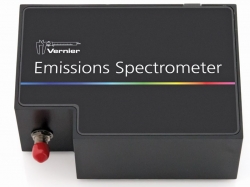
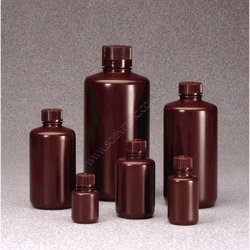

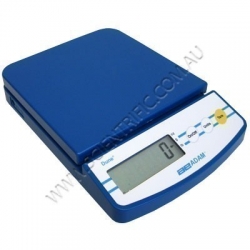
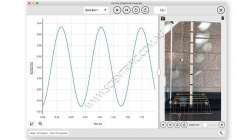


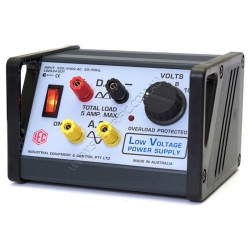

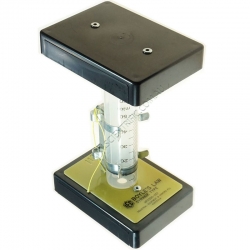
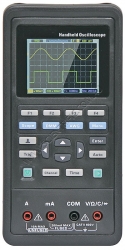

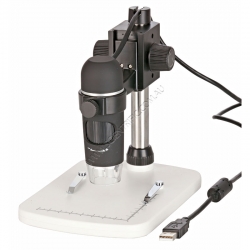
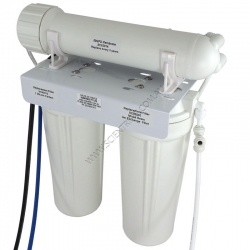
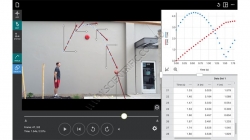




541 low relevance results shown for 'Red'. |1|2|3|4|5|6|7|8|9|10|11|12|13|14|15|16|17|18|19|20|21|22 | Next | View 100 per page
Showing low relevance matches only. Return to normal search results
Curriculum resources related to 'Red'
ACSSU184 Year 10 Biological SciencesDNA - The transmission of heritable characteristics from one generation to the next involves DNA and genes ACSSU097 Year 6 Physical Sciences
Electrical Circuits - Electrical energy can be transferred and transformed in electrical circuits and can be generated from a range of sources ACSSU115 Year 7 Earth and Space Sciences
Earth Moon Sun - Predictable phenomena on Earth, including seasons and eclipses, are caused by the relative positions of the sun, Earth and the moon ACSSU229 Year 10 Physical Sciences
Forces and Motion - The motion of objects can be described and predicted using the laws of physics ACSBL029 Year 11 Biodiversity and the interconnectedness of life
Ecosystem dynamics - Models of ecosystem interactions (for example, food webs, successional models) can be used to predict the impact of change and are based on interpretation of and extrapolation from sample data (for example, data derived from ecosystem surveying techniques ACSBL085 Year 12 Heredity and continuity of life
DNA genes and the continuity of life - Frequencies of genotypes and phenotypes of offspring can be predicted using probability models, including Punnett squares, and by taking into consideration patterns of inheritance, including the effects of dominant, autosomal and sex-linked alleles and mu ACSBL090 Year 12 Heredity and continuity of life
Continuity of life on Earth - Natural selection occurs when selection pressures in the environment confer a selective advantage on a specific phenotype to enhance its survival and reproduction; this results in changes in allele frequency in the gene pool of a population ACSBL091 Year 12 Heredity and continuity of life
Continuity of life on Earth - In additional to environmental selection pressures, mutation, gene flow and genetic drift can contribute to changes in allele frequency in a population gene pool and results in microevolutionary change ACSCH056 Year 11 Molecular interactions and reactions
Intermolecular forces and gases - The shapes of molecules can be explained and predicted using three dimensional representations of electrons as charge clouds and using valence shell electron pair repulsion (VSEPR) theory ACSCH073 Year 11 Molecular interactions and reactions
Rates of chemical reactions - Catalysts, including enzymes and metal nanoparticles, affect the rate of certain reactions by providing an alternative reaction pathway with a reduced activation energy, hence increasing the proportion of collisions that lead to a chemical change ACSCH091 Year 12 Equilibrium acids and redox reactions
Chemical equilibrium systems - Over time, physical changes and reversible chemical reactions reach a state of dynamic equilibrium in a closed system, with the relative concentrations of products and reactants defining the position of equilibrium ACSCH096 Year 12 Equilibrium acids and redox reactions
Chemical equilibrium systems - Equilibrium position can be predicted qualitatively using equilibrium constants ACSCH097 Year 12 Equilibrium acids and redox reactions
Chemical equilibrium systems - Acids are substances that can act as proton (hydrogen ion) donors and can be classified as monoprotic or polyprotic depending on the number of protons donated by each molecule of the acid ACSCH098 Year 12 Equilibrium acids and redox reactions
Chemical equilibrium systems - The strength of acids is explained by the degree of ionisation at equilibrium in aqueous solution, which can be represented with chemical equations and equilibrium constants (Ka) ACSCH099 Year 12 Equilibrium acids and redox reactions
Chemical equilibrium systems - The relationship between acids and bases in equilibrium systems can be explained using the Brønsted Lowry model and represented using chemical equations that illustrate the transfer of hydrogen ions ACSCH100 Year 12 Equilibrium acids and redox reactions
Chemical equilibrium systems - The pH scale is a logarithmic scale and the pH of a solution can be calculated from the concentration of hydrogen ions; Kw can be used to calculate the concentration of hydrogen ions from the concentration of hydroxide ions in a solution ACSCH101 Year 12 Equilibrium acids and redox reactions
Chemical equilibrium systems - Acidbase indicators are weak acids or bases where the acidic form is of a different colour to the basic form ACSCH102 Year 12 Equilibrium acids and redox reactions
Chemical equilibrium systems - Volumetric analysis methods involving acidbase reactions rely on the identification of an equivalence point by measuring the associated change in pH, using chemical indicators or pH meters, to reveal an observable end point ACSCH103 Year 12 Equilibrium acids and redox reactions
Oxidation and reduction - A range of reactions, including displacement reactions of metals, combustion, corrosion, and electrochemical processes, can be modelled as redox reactions involving oxidation of one substance and reduction of another substance ACSCH104 Year 12 Equilibrium acids and redox reactions
Oxidation and reduction - Oxidation can be modelled as the loss of electrons from a chemical species, and reduction can be modelled as the gain of electrons by a chemical species; these processes can be represented using half equations ACSCH106 Year 12 Equilibrium acids and redox reactions
Oxidation and reduction - The relative strength of oxidising and reducing agents can be determined by comparing standard electrode potentials ACSCH107 Year 12 Equilibrium acids and redox reactions
Oxidation and reduction - Electrochemical cells, including galvanic and electrolytic cells, consist of oxidation and reduction half reactions connected via an external circuit that allows electrons to move from the anode (oxidation reaction) to the cathode (reduction reaction) ACSCH108 Year 12 Equilibrium acids and redox reactions
Oxidation and reduction - Galvanic cells, including fuel cells, generate an electrical potential difference from a spontaneous redox reaction; they can be represented as cell diagrams including anode and cathode halfequations ACSCH110 Year 12 Equilibrium acids and redox reactions
Oxidation and reduction - Cell potentials at standard conditions can be calculated from standard electrode potentials; these values can be used to compare cells constructed from different materials ACSCH130 Year 12 Structure synthesis and design
Properties and structure of organic materials - Data from analytical techniques, including mass spectrometry, xray crystallography and infrared spectroscopy, can be used to determine the structure of organic molecules, often using evidence from more than one technique ACSPH040 Year 11 Thermal nuclear and electrical physics
Electrical circuits - The energy available to charges moving in an electrical circuit is measured using electric potential difference, which is defined as the change in potential energy per unit charge between two defined points in the circuit ACSPH041 Year 11 Thermal nuclear and electrical physics
Electrical circuits - Energy is required to separate positive and negative charge carriers; charge separation produces an electrical potential difference that can be used to drive current in circuits ACSPH061 Year 11 Linear Motion and Waves
Linear motion and force - Representations, including graphs and vectors, and/or equations of motion, can be used qualitatively and quantitatively to describe and predict linear motion ACSPH064 Year 11 Linear Motion and Waves
Linear motion and force - Momentum is a property of moving objects; it is conserved in a closed system and may be transferred from one object to another when a force acts over a time interval ACSPH065 Year 11 Linear Motion and Waves
Linear motion and force - Energy is conserved in isolated systems and is transferred from one object to another when a force is applied over a distance; this causes work to be done and changes to kinetic and/or potential energy of objects ACSPH073 Year 11 Linear Motion and Waves
Waves - A mechanical system resonates when it is driven at one of its natural frequencies of oscillation; energy is transferred efficiently into systems under these conditions ACSPH076 Year 11 Linear Motion and Waves
Waves - A wave model explains a wide range of lightrelated phenomena including reflection, refraction, total internal reflection, dispersion, diffraction and interference; a transverse wave model is required to explain polarisation ACSPH021 Year 11 Thermal nuclear and electrical physics
Heating processes - Change of state involves internal energy changes to form or break bonds between atoms or molecules; latent heat is the energy required to be added to or removed from a system to change the state of the system
Products related to 'Red'

Vernier Go Direct Temperature Probe
VERNIER GO DIRECT TEMPERATURE PROBE
Vernier's water resistant Go Direct Temperature Probe is a rugged, general purpose temperature sensor that students can use to monitor temperature. It connects wirelessly via Bluetooth® or it can be wired via USB to your device.
...
Order code: GDX-TMP

Vernier Go Direct SpectroVis Plus Spectrophotometer - Spectrometer
VERNIER GO DIRECT SPECTROVIS PLUS SPECTROPHOTOMETER.
Vernier's Go Direct SpectroVis Plus Spectrophotometer quickly measures a full wavelength spectrum. It directly connects wirelessly via Bluetooth® or wired via USB to your platform.
Introduce your students to spectros...
Order code: GDX-SVISPL-INTL

Vernier LabQuest 3 Data Logger and Interface
VERNIER LABQUEST 3
The new Vernier LabQuest 3 is a powerful, advanced, easy-to-navigate and versatile datalogging solution for STEM students. It is a standalone data-collection platform that allows students to collect, analyze, graph and interact with data efficiently. St...
Order code: LABQ3-INTL

Vernier LabQuest Mini Data Logger Interface
VERNER LABQUEST MINI (MODEL 2)
Vernier LabQuest Mini (Model 2) brings the power of our award-winning LabQuest technology to teachers who don’t need the versatility of a standalone device. The perfect solution for educators collecting data with a Windows or Macintosh compu...
Order code: LQ-MINI

Vernier Graphical Analysis
Free download
VERNIER GRAPHICAL ANALYSIS
Vernier's Graphical Analysis™ is a free software tool for science students to collect, share, graph and analyse data
from Vernier sensors using Chrome™, Windows®, Mac OS™, iOS® and Android™ devices.
Downloads:
• Windows computer r...

LED Light with Filters for Photosynthesis or Solar Cell Experiments - Rechargeable
A very bright condensed LED light and primary colour filters that are ideal for Photosynthesis or Solar Cell experiments.
LED light features:
• The built-in Li-ion rechargeable battery makes for easy portability
• A large lens condenses the light beam
• A swivelling ...
Order code: SC1125-A

Vernier Emissions Spectrometer
Discontinued - only 1 in stock
VERNIER EMISSIONS SPECTROMETER
The Vernier Emissions Spectrometer allows you to instantly collect emissions spectra from light bulbs, gas discharge tubes or the sun. Capture data and analyse it immediately on your computer or LabQuest.
The perfect tool to conduct emissio...
Order code: VSP-EM

Nalgene Amber Narrow Mouth Bottle HDPE 30ml
A Nalgene branded narrow mouthed round 30 ml bottle made of amber high density polyethylene with a 20 mm amber polypropylene screw closure.
Features:
Reduce UV light transmission to help protect light sensitive liquids.
Nalgene amber bottles comply with U.S. Pharmacop...
Order code: 2004-0001

Nalgene Amber Narrow Mouth Bottle HDPE 60ml
A Nalgene branded narrow mouthed round 60 ml bottle made of amber high density polyethylene with a 20 mm amber polypropylene screw closure.
Features:
Reduce UV light transmission to help protect light sensitive liquids.
Nalgene amber bottles comply with U.S. Pharmacop...
Order code: 2004-0002

Adam Electronic Balance 200g x 0.1g
ADAM DUNE COMPACT ELECTRONIC BALANCE 200 x 0.1g
An easy to use and economically priced balance to suit laboratories. Includes advanced overload protection that gives a visual warning if there is an excessive load.
Specifications
• 200g capacity
• 0.1g resolu...
Order code: DCT 201
| Purchase QTY: (Each) | 1+ |
|---|---|
| Base price | $140.00 |
| Scientrific's price | $135.00 |
| Educational special | $112.00 |
| CLICK FOR QTY PRICING | |
| Prices exclude GST and freight | |

Vernier Graphical Analysis Pro 1 Year
VERNIER GRAPHICAL ANALYSIS PRO 1 YEAR
Vernier Graphical Analysis Pro is a subscription licence that expands the features of the free Vernier Graphical Analysis app.
This one year subscription provides all students and...
Order code: GAP-1YR

Vernier Graphical Analysis Pro 3 Years
VERNIER GRAPHICAL ANALYSIS PRO 3 YEARS
Vernier Graphical Analysis Pro is a subscription licence that expands the features of the free Vernier Graphical Analysis app.
This 3 year subscription provides all students and ...
Order code: GAP-3YR

Vernier Graphical Analysis Pro Individual 1 Year
VERNIER GRAPHICAL ANALYSIS PRO INDIVIDUAL 1 YEAR
Vernier Graphical Analysis Pro is an annual subscription licence that expands the features of the free Vernier Graphical Analysis app. This version of the licence allows...
Order code: GAP-SINGLE

IEC Power Supply 2 to 12V AC/DC 5 Amp LED Overload
IEC POWER SUPPLY 2-12V AC/DC 5A WITH OVERLOAD LED
Our recommended model because a handy front panel LED indicates when the overload of this power supply has tripped and reset.
In all other details it is identical to model LB26...
Order code: LB2634-001
| Purchase QTY: (Each) | 1+ |
|---|---|
| Base price | $223.60 |
| Scientrific's price | $219.00 |
| Educational special | $194.00 |
| CLICK FOR QTY PRICING | |
| Prices exclude GST and freight | |

Vernier Logger Pro 3 Data Logging Software
Logger Pro will be discontinued in December 2024, replaced by Graphical Analysis Pro, Vernier Video Analysis, Vernier Instrumental Analysis and Vernier Spectral Analysis.
VERNIER LOGGER PRO 3
Vernier's Logger Pro is an easy to use data-collection and analysis software for Windows and Mac computers. The generous Site Licence covers a single school campus or in the case of a university, a single department at a single campus. The licence in...
Order code: LP

IEC Boyle's Law Syringe Type PSSC
IEC BOYLE'S LAW SYRINGE TYPE
The IEC syringe type Boyle's Law apparatus is convenient and low cost but only approximate results are to be expected due to friction losses.
A commercial plastic syringe is used and weights are placed on the system to compress the gas to th...
Order code: MF0350-001

Handheld Oscilloscope and Digital Multimeter
HANDHELD OSCILLOSCOPE AND DIGITAL MULTIMETER.
The ultimate field testing accessory combining a digital storage oscilloscope and digital multimeter. Fits right in the palm of your hand and is suitable for single handed operation when testing in tricky locations.
It feat...
Order code: SC2286
| Purchase QTY: (Each) | 1+ |
|---|---|
| Scientrific's price | $409.50 |
| Educational special | $399.00 |
| CLICK FOR QTY PRICING | |
| Prices exclude GST and freight | |

Safety Glasses - Medium Impact - Scratch Resistant Hardcoat
SAFETY GLASSES - MEDIUM IMPACT- SCRATCH RESISTANT HARD COAT
Protective student safety glasses providing a wide field of view, having a single wrap-around clear polycarbonate lens with integral side-shields and contoured nose bridge.
These safety glasses are AS1337.1 c...
Order code: SC2800
| Purchase QTY: (Each) | 1+ |
|---|---|
| Base price | $4.95 |
| Scientrific's price | $4.50 |
| Educational special | $4.50 |
| CLICK FOR QTY PRICING | |
| Prices exclude GST and freight | |

USB Digital Camera Microscope 5MP
USB DIGITAL CAMERA MICROSCOPE
Quickly, easily and economically turn your computer into a microscope! Simply plug this camera into a USB port on your computer to capture and display high resolution images or video.
The camera is mounted on a professional stand that allows you...
Order code: SC5135
| Purchase QTY: (Each) | 1+ |
|---|---|
| Scientrific's price | $235.00 |
| Educational special | $235.00 |
| CLICK FOR QTY PRICING | |
| Prices exclude GST and freight | |

Reverse Osmosis Deioniser System
A deioniser is a great replacement for a traditional, energy wasting electric still as deionisers use no electricity or cooling water.
Our Reverse Osmosis Deioniser has been specially built for us and has a 3 step deionisation process that uses a carbon filter, a reverse osmos...
Order code: SC93010

Vernier Video Analysis 1 Year
VERNIER VIDEO ANALYSIS 1 YEAR
Vernier Video Analysis is an annual subscription licence that brings video analysis to your students in a dedicated and streamlined application.
This one year site subscription provides all students and educators at your school or universit...
Order code: VVA-1YR

Vernier Video Analysis 3 Years
VERNIER VIDEO ANALYSIS 3 YEARS
Vernier Video Analysis is an annual subscription licence that brings video analysis to your students in a dedicated and streamlined application.
This 3 year site subscription provides all students and educators at your school or university...
Order code: VVA-3YR

Vernier Video Analysis Individual 1 Year
VERNIER VIDEO ANALYSIS INDIVIDUAL 1 YEAR
Vernier Video Analysis is an annual subscription licence that brings video analysis to your students in a dedicated and streamlined application. This version of the licence allows very small schools to subscribe per student per yea...
Order code: VVA-SINGLE

Vernier Watts Up Pro Power Monitor
Save 50% but very limited stock
WATTS UP PRO INTERNATIONAL MODEL
Watts Up Pro is a device that measures real-time electricity usage and cost. It auto-IDs and connects to a USB port on your computer or LabQuest. Logger Pro 3.8 or LabQuest App 1.3 or newer are required.
When connected, Watts Up Pro can...
Order code: WU-PRO-AU

Adam Electronic Balance 2000g x 1g
ADAM DUNE COMPACT ELECTRONIC BALANCE 2000 x 1g
An easy to use and economically priced balance to suit laboratories. Includes advanced overload protection that gives a visual warning if there is an excessive load.
Specifications
• 2000g capacity
• 1g resoluti...
Order code: DCT 2000
| Purchase QTY: (Each) | 1+ |
|---|---|
| Base price | $140.00 |
| Scientrific's price | $135.00 |
| Educational special | $112.00 |
| CLICK FOR QTY PRICING | |
| Prices exclude GST and freight | |
541 low relevance results shown for 'Red'. |1|2|3|4|5|6|7|8|9|10|11|12|13|14|15|16|17|18|19|20|21|22 | Next | View 100 per page


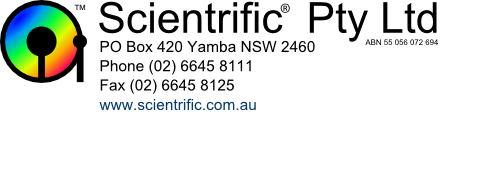
 ,
,